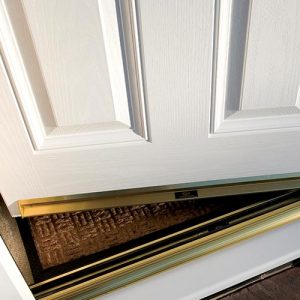Fire Doors: Understanding Their Role in Fire Protection and Security Codes
Fire Doors: Understanding Their Role in Fire Protection and Security Codes
Blog Article
A Comprehensive Overview to the Different Fire Door Types Available
From the sophistication and modest fire resistance of wooden fire doors to the durable security used by steel fire doors, each kind brings distinct advantages tailored to certain atmospheres. Glass fire doors not only supply essential fire security yet additionally enable all-natural light to permeate, while composite fire doors provide an equilibrium of design versatility and efficiency.
Wooden Fire Doors
Wooden fire doors play an essential function in fire safety and security by compartmentalizing areas to protect against the spread of flames and smoke. These doors are particularly made and rigorously checked to satisfy strict fire-resistance criteria, making them a trusted option for both household and industrial structures. Constructed from fire-resistant lumber and treated with intumescent seals, wood fire doors can withstand heats and maintain their architectural honesty throughout a fire.
The effectiveness of wooden fire doors hinges on their capacity to develop a barrier versus fire and smoke, usually rated to endure 30 to 60 mins of direct exposure. This delay is essential, giving owners with beneficial time to evacuate and enabling emergency services to react a lot more efficiently. Furthermore, wood fire doors been available in numerous coatings and styles, which ensures they can seamlessly mix with the interior aesthetics of any kind of structure.
Maintenance and routine assessments are crucial for making sure the ongoing performance of wooden fire doors. This includes inspecting the honesty of the door, the capability of the seals, and making certain that the door shuts appropriately and locks firmly. By sticking to these techniques, wooden fire doors can be an indispensable component of an extensive fire security strategy.
Steel Fire Doors
While wooden fire doors offer a blend of capability and visual appeals, steel fire doors bring a various collection of advantages to terminate safety services. Fire doors. Recognized for their robustness and exceptional resistance to extreme problems, steel fire doors are a favored option in commercial and industrial setups where durability and high efficiency are paramount
Among the primary advantages of steel fire doors is their amazing fire resistance. Created from galvanized or stainless steel, these doors can stand up to heats for prolonged durations, offering critical time for emptying and emergency situation response. They are commonly ranked to endure fire direct exposure for approximately three hours, substantially enhancing the security of passengers.
Steel fire doors also boast excellent toughness and resilience. Unlike wood equivalents, they are much less vulnerable to warping, splitting, or various other forms of damage gradually, guaranteeing long-lasting integrity. In addition, they offer outstanding safety attributes, making them an ideal choice for areas needing rigid defense versus unauthorized access.
The upkeep requirements for steel fire doors are relatively low. Their resistance to pests, wetness, and other environmental aspects better expands their lifespan, making them an economical remedy for lasting fire safety and security. Overall, steel fire doors are a vital component in developing a resistant fire defense approach.
Glass Fire Doors
Glass fire doors, usually preferred for their visual charm and performance, provide a sophisticated solution to fire safety and security without endangering on exposure. These doors are developed with specialized fire-resistant glass that can withstand heats and prevent the spread of fires and smoke, making sure that they satisfy rigorous fire safety and security requirements.
The fire-resistant glass used in these doors typically contains several layers, including an unique intumescent interlayer that broadens when exposed to warmth, consequently creating a shielding obstacle. Fire doors. This construction not just preserves the structural honesty of the door during a fire yet likewise allows for all-natural light to permeate via, enhancing both the safety and security and atmosphere of the space
Glass fire doors are especially beneficial in business buildings, such as workplaces, hotels, and purchasing centers, where keeping an open and inviting setting is essential. They can be included into numerous design plans, offering versatility in regards to framing products, finishes, and sizes. In addition, they can be combined with modern-day architectural components, making them a preferred option for modern designs.

Composite Fire Doors
Compound fire doors, built from a combination of products such as lumber, steel, and glass-reinforced plastic (GRP), provide a durable and flexible service to fire safety. These doors utilize the toughness of their constituent products to supply remarkable fire resistance and structural integrity. The lumber core usually provides security and insulation, while the steel and GRP layers add to the door's overall toughness and longevity.
Among the key advantages of composite fire doors is their exceptional fire resistance. They are carefully checked to meet rigorous fire security standards, usually attaining fire scores of 30, 60, and even 120 mins. This guarantees that they can effectively stop the spread of fire and smoke, providing crucial time for passengers to leave safely.
In addition, composite fire doors are highly adjustable. They can be made to match various aesthetic preferences without jeopardizing on safety and security. Readily available in multiple finishes, shades, and styles, these doors can flawlessly integrate into both contemporary and standard building designs.
Furthermore, composite fire doors use superb thermal and acoustic insulation. This makes them suitable for a variety of atmospheres, from go to this site property buildings to industrial buildings, ensuring both safety and convenience.
Acoustic Fire Doors

The construction of acoustic fire doors includes numerous layers of products designed to improve both their acoustic and fireproof properties. Usually, they are composed of a strong core made from materials like particleboard, mineral core, or steel, combined with acoustic seals and intumescent strips. The intumescent strips broaden when subjected to heats, developing a barrier that avoids the spread of fire and smoke.
Performance requirements for acoustic fire doors are specified by their Audio Decrease Index (Rw) and fire resistance ranking. The Rw rating quantifies the door's ability to decrease sound transmission, while the fire resistance score suggests the period for which the door can stand up to fire direct exposure, generally varying from 30 to 60 mins.
Including acoustic fire doors right into constructing layouts not just boosts safety and security but also adds to a more comfy and effective setting by decreasing sound pollution. This twin performance makes them a crucial selection for modern-day building jobs.
Final Thought
To conclude, the diverse range of fire door kinds-- wood, steel, glass, composite, and acoustic-- each deals distinct benefits customized to try these out details requirements. Wooden fire doors offer visual worth and moderate protection, whereas steel fire doors ensure boosted longevity and protection. Glass fire doors equilibrium safety with natural light, while composite fire doors supply style flexibility and performance. Acoustic fire doors resolve the twin requirements of sound insulation and fire defense, making them necessary in noise-sensitive atmospheres.
Report this page